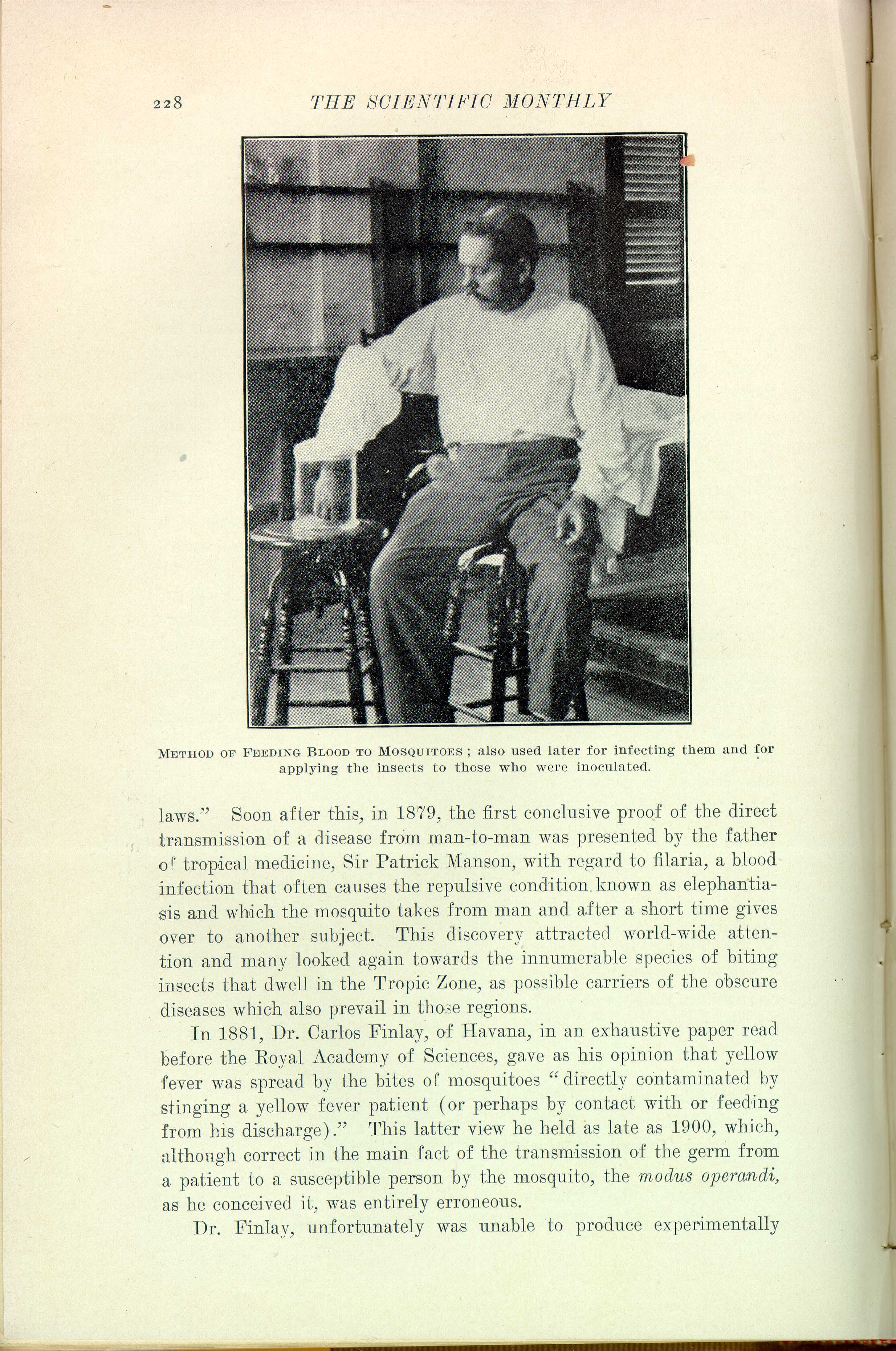| The Scientific Monthly | ||
ORIGIN AND DEVELOPMENT OF THE MOSQUITO THEORY
The possible agency of insects in the propagation of yellow fever was thought of by more than one observer, from a very early period in the history of this disease. For instance, Rush, of Philadelphia, in 1797, noticed the excessive abundance of mosquitoes during that awful epidemic. Subsequently, several others spoke of the coincidence of gnats or mosquitoes and yellow fever, but without ascribing any direct relation to the one regarding the other. Of course, man-to-man infection through the sole intervention of an insect was a thing entirely inconceivable and therefore unthought of until very recently, and in truth the discovery, as far as yellow fever is concerned, was the result of a slow process of evolution of the fundamental fact, taken in connection with similar findings, in other diseases.
The earliest direct reference is found in the writings of Dr. Nott, of Mobile, Ala., who in 1848 suggested that the dissemination of the yellow-fever poison was evidently by means of some insect "that remained very close to the ground.'' But the first who positively pointed to the mosquito as the spreader of yellow fever, who showed that absence of mosquitoes precluded the existence of the disease and who prescribed the ready means to stamp it out, by fumigation and by preventing the bites of the insects, was Dr. Louis D. Beauperthuy, a French physician, then located in Venezuela. The writer has an original copy of his paper, published in 1853, where he fastens the guilt upon the domestic mosquitoes, believing, in accord with the prevailing teachings of medical science, that the mosquitoes infected themselves by contact or feeding upon the organic matter found in the stagnant waters where they are hatched, afterwards inoculating the victims by their sting. He recognized the fact that yellow fever is not contagious and therefore could not think of the possibility of man-to-man infection, as we know it to-day. The keenest observer was this man Beauperthuy, and, even at that benighted time in the history of tropical medicine, made most interesting studies of the blood and tissues, employing the microscope and the chemical reactions in his research. No one believed him, and a commission appointed to report upon his views said that they were inadmissible and all but declared him insane.
This field of investigation remained dormant for a comparatively long period of time. Meanwhile another medical writer, Dr. Greenville Dowell, mentions in 1876, that "if we compare the effect of heat and cold on gnats and mosquitoes with yellow fever, it will be difficult to believe it is of the same nature, as it is controlled by the same natural

METHOD OF FEEDING BLOOD TO MOSQUITOES; also used later for infecting them and applying the insects to those who were inoculated.
[Description: Photograph of a man seated with his right hand inside a bell jar. He is being bitten by mosquitos that carry yellow fever.]In 1881, Dr. Carlos Finlay, of Havana, in an exhaustive paper read before the Royal Academy of Sciences, gave as his opinion that yellow fever was spread by the bites of mosquitoes "directly contaminated by stinging a yellow fever patient (or perhaps by contact with or feeding from his discharge).'' This latter view he held as late as 1900, which, although correct in the main fact of the transmission of the germ from a patient to a susceptible person by the mosquito, the modus operandi, as he conceived it, was entirely erroneous.
Dr. Finlay, unfortunately was unable to produce experimentally
The wonderful discoveries of Theobald Smith, as to the agency of ticks in spreading Texas fever of cattle, and those of Ross and the Italian investigators who showed conclusively that malaria was transmitted by a species of mosquito, brought the knowledge of these various diseases to the point where the Army Board took up the investigation of yellow fever.
| The Scientific Monthly | ||